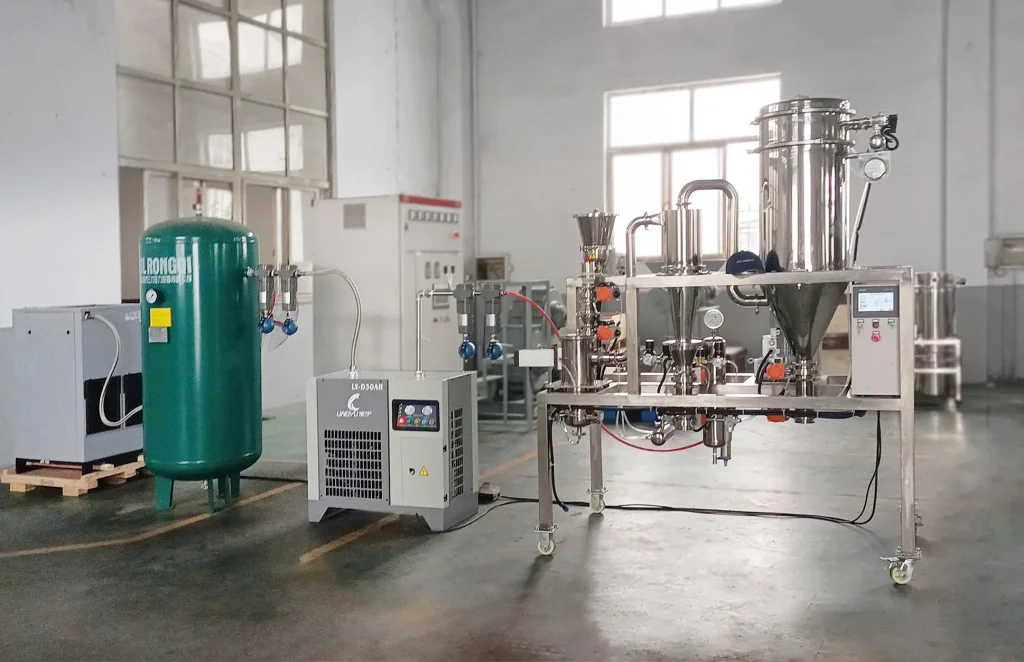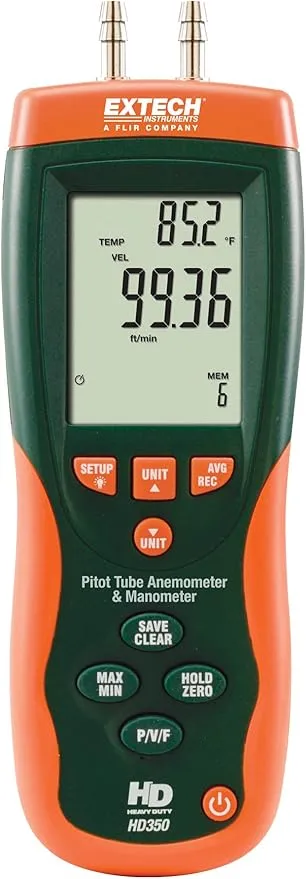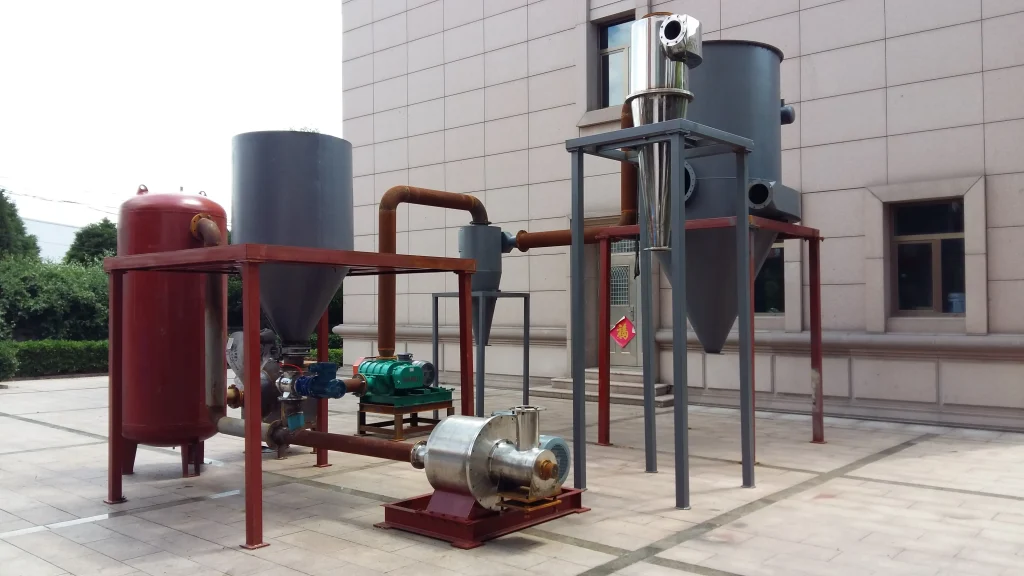Le débit d'alimentation et la pression d'air sont deux paramètres essentiels dans le fonctionnement d'une machine à plat. broyeur à jet, affectant considérablement son efficacité de broyage et sa capacité de production.

Taux d'alimentation
Le débit d'alimentation désigne la quantité de matériau introduite dans le broyeur par unité de temps. Maintenir un débit d'alimentation approprié est crucial pour un fonctionnement stable et une efficacité de broyage optimale. Plusieurs facteurs influencent le débit d'alimentation idéal, notamment les propriétés du matériau, telles que la dureté, la teneur en humidité et la granulométrie.
De plus, les différents modèles de broyeurs à jet plat ont des capacités de traitement variables, ce qui nécessite un ajustement du débit d'alimentation en conséquence. La finesse de broyage et le rendement souhaités jouent également un rôle important dans le choix du débit d'alimentation approprié. Pour optimiser le débit d'alimentation, il est préférable d'équilibrer la capacité de production et la consommation d'énergie, afin de garantir le bon fonctionnement du broyeur. Lors de la mise en service ou de l'installation, l'ajustement progressif du débit d'alimentation, tout en surveillant le fonctionnement du broyeur et les résultats de broyage, permet d'identifier la plage de débit optimale.
Pression atmosphérique

La pression d'air dans un broyeur à jet plat désigne la pression du gaz utilisée pour générer le flux d'air à grande vitesse nécessaire au broyage. Le niveau de pression d'air influence directement la vitesse et l'énergie de ce flux, impactant ainsi les performances de broyage. La pression d'air requise dépend des caractéristiques du matériau, telles que la dureté, la fragilité et la cohésion, ainsi que des objectifs de broyage spécifiques, notamment la granulométrie et la pureté des particules.
Des facteurs liés à l'équipement, tels que la taille des buses et la conception de la chambre de broyage, influencent également le choix de la pression d'air. Pour déterminer la pression d'air appropriée, la granulométrie cible permet de définir la plage de vitesse limite de la roue du classificateur, qui détermine à son tour la plage de pression d'air nécessaire. Le type de matériau (monocristal, polycristal ou aggloméré) affine encore ce choix. En pratique, les opérateurs doivent ajuster la pression d'air en observant les résultats de broyage et la consommation d'énergie pour atteindre le réglage optimal.

Cependant, la prudence est de mise. Une pression d'air excessive peut produire une abondance de poudre fine difficile à séparer, tout en augmentant la consommation d'énergie et les coûts d'exploitation. À l'inverse, une pression d'air trop faible entraîne une vitesse d'écoulement insuffisante et une réduction de l'efficacité du broyage.
En résumé, l'optimisation du débit d'alimentation et de la pression d'air dans un broyeur à jet plat nécessite une prise en compte rigoureuse des propriétés du matériau, du modèle de broyeur, des objectifs de broyage et des spécificités de l'équipement. Un réglage et un équilibre judicieux de ces paramètres lors de la configuration et de l'exploitation permettent au broyeur d'atteindre des performances optimales, maximisant ainsi la qualité de broyage et le rendement.
Poudre épique
Les broyeurs à jet plat d'Epic Powder Machinery sont conçus pour une précision et une efficacité exceptionnelles. Ils vous permettent d'obtenir des résultats constants et de haute qualité avec une consommation d'énergie minimale. Prêt à optimiser votre processus de broyage ? Contactez nos experts dès aujourd'hui pour une consultation gratuite et découvrez comment nos solutions peuvent améliorer vos performances de production.